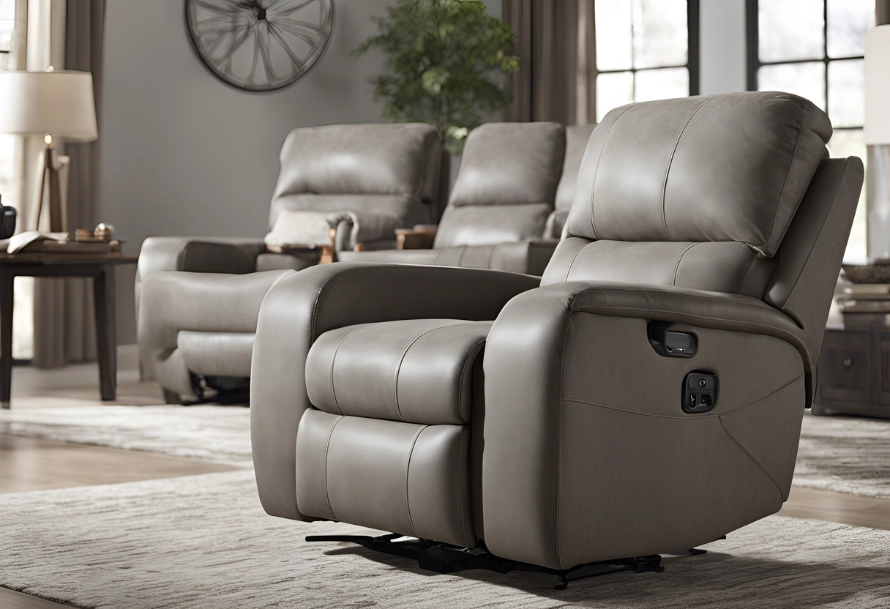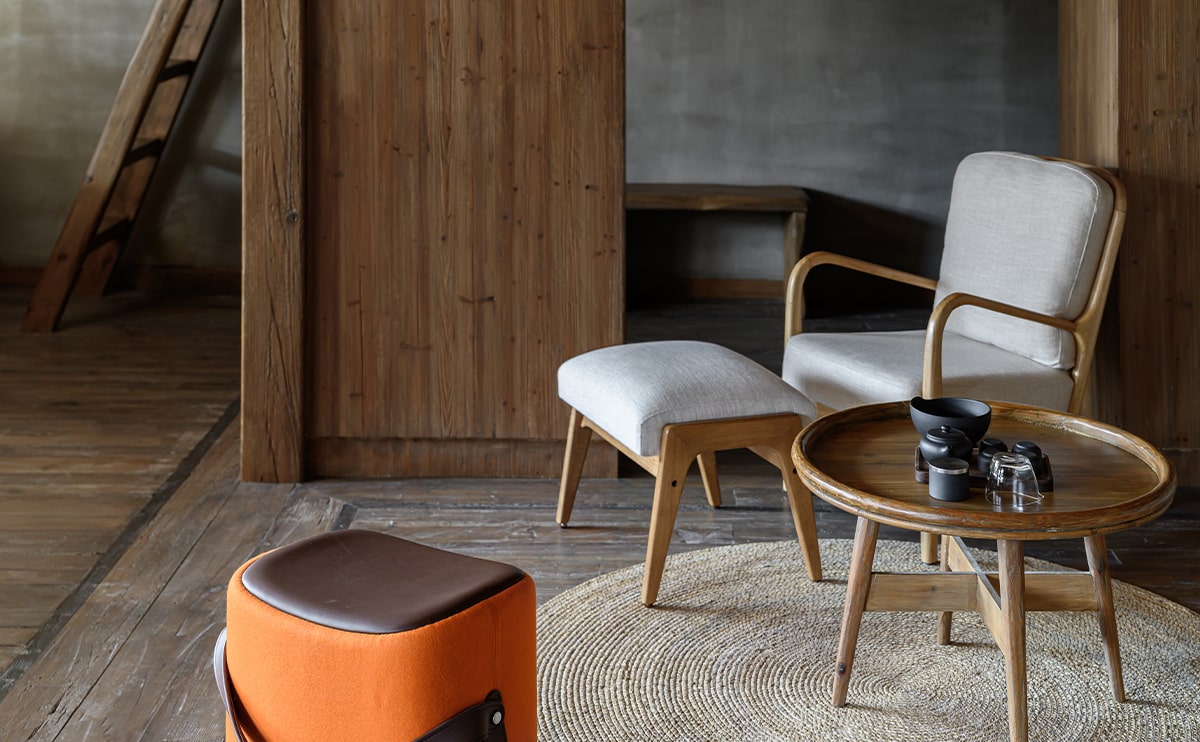Recliner chairs are a popular choice for relaxation. They offer comfort and support, making them ideal for unwinding after a long day.
But how long is it recommended to sit in a recliner chair? This question is more important than you might think.
Prolonged sitting, even in a comfortable reclining chair, can have health implications. It’s linked to obesity (CHAPTER 6.Physical activity, sedentary behaviour, and obesity), heart disease (Sitting more than 10 hours a day may increase heart failure, death risk), and diabetes (Breaking Sitting Streaks).
Yet, recliners can also offer benefits. They can reduce pressure on the spine and improve circulation. The key is to use them responsibly.
In this article, we’ll explore the recommended recliner chair sitting duration. We’ll also delve into the risks of being sedentary and how to maximize comfort without compromising health.
Join us as we navigate the world of recliner chairs and healthy sitting habits.

Contents
- 1 Understanding the Recliner Chair Sitting Duration
- 2 Risks of Being Sedentary in a Comfortable Reclining Chair
- 3 Maximizing Comfort and Health with Adjustable Recliner Chairs
- 4 Strategies for Responsible Recliner Chair Use
- 5 Incorporating Movement into Your Recliner Routine
- 6 Conclusion: Embracing a Healthy, Active Lifestyle with Recliner Chairs
Understanding the Recliner Chair Sitting Duration
Determining how long to sit in a recliner chair can vary based on individual needs. Generally, it’s advised to limit sedentary periods and integrate breaks into your routine.
Experts often recommend not sitting for more than 30 to 60 minutes at a stretch. This duration allows for relaxation without the risks associated with prolonged inactivity.
Key factors influencing the recommended sitting duration include:
- Personal health conditions
- Quality and ergonomics of the chair
- Additional daily activities
- Individual comfort levels
Monitoring your body’s signals is crucial. It ensures you’re comfortable yet aware of when it’s time to move.
The Recommended Duration for Sitting
Sitting comfortably in a recliner chair is appealing, but moderation is important. Most experts suggest short intervals, around 30 to 60 minutes, followed by movement.
This recommendation aims to maintain physical health while enjoying the chair’s benefits. It ensures comfort doesn’t lead to negative health outcomes.
The Importance of Taking Breaks
Taking breaks is vital in maintaining good health while using a recliner. Regular intervals of movement prevent the potential hazards of a sedentary lifestyle.
Getting up every 30 minutes encourages circulation and reduces the strain that can come from staying seated. Incorporating these breaks into your schedule can enhance overall well-being.
Risks of Being Sedentary in a Comfortable Reclining Chair
A comfortable reclining chair can make anyone feel relaxed and cozy. However, this comfort can entice prolonged sitting which poses health risks.
Sedentary lifestyles increase the chance of chronic health issues, such as obesity or heart disease. Remaining in a static position for extended periods hinders healthy blood circulation.
Being aware of these risks encourages balancing seated time with activity. Movement enhances health and decreases the likelihood of developing related problems.
Health Risks Associated with Prolonged Sitting
Prolonged sitting in a recliner may seem harmless but can result in serious health complications. It often leads to increased cholesterol levels and high blood pressure.
A sedentary lifestyle is linked with a higher risk of developing Type 2 diabetes. Thus, it becomes essential to limit seating duration to minimize these risks.
The Impact on Posture and Back Health
Spending too much time in a recliner can negatively impact posture. Poor posture leads to muscle stiffness and back pain over time.
Reclining at improper angles contributes to spinal alignment issues, exacerbating potential discomfort. Ensuring proper support is key to maintaining back health.
Ultimately, it’s essential to remain mindful of posture when enjoying a recliner. This helps prevent any long-term musculoskeletal problems.
Maximizing Comfort and Health with Adjustable Recliner Chairs
Adjustable recliner chairs offer flexibility and customized support. They are ideal for those seeking both comfort and health benefits.
These chairs allow users to modify settings for optimal sitting posture. Proper positioning reduces the risk of strain on the spine and muscles.

Here are some features for maximizing comfort and health:
- Lumbar support for spinal alignment.
- Adjustable headrest to prevent neck strain.
- Footrest elevation for improved circulation.
With these benefits, adjustable recliners become an invaluable addition to one’s living space. They blend comfort with practicality for sustained use.
Ergonomic Sitting in a Recliner
Ergonomic sitting in a recliner involves aligning the body to prevent strain. Ensuring a natural posture maintains comfort without sacrificing health.
The chair should support the lumbar region, promoting a healthy spine curve. This reduces risks of back pain and discomfort.
Additionally, keep feet flat with knees slightly above hip level. This position fosters improved circulation and leg comfort.
Features to Look for in a Recliner Chair
Choosing the right recliner involves considering key features for comfort and support. Look for features that can adapt to individual needs.
A high-quality recliner should have adjustable seating angles. This customization helps in supporting various sitting postures comfortably.
Additionally, check for robust construction materials for long-lasting durability. Prioritize chairs with supportive cushioning to ensure comfort over extended use.
Strategies for Responsible Recliner Chair Use
Using a recliner chair responsibly involves combining comfort with healthy habits. It’s crucial to create a balance between sitting and remaining active.
Consider the following strategies to maximize benefits while using a recliner chair:
- Alternate sitting positions regularly.
- Take short breaks every 30 minutes to stand or stretch.
- Use a timer or alarm as a reminder to move.

By incorporating these strategies, you can enjoy your recliner without compromising your health. Staying mindful of movement helps avoid the consequences of a sedentary lifestyle.
Balancing Sitting with Physical Activity
Balancing sitting in a recliner with physical activity is essential for maintaining a healthy lifestyle. Movement is key in offsetting prolonged sitting’s negative effects.
Engage in activities such as short walks around the house or simple exercises. These can be sprinkled throughout the day for convenience.
Incorporating frequent movement keeps your body engaged. It reduces stiffness and improves both physical and mental well-being.
Tips for Creating a Balanced Routine
Establishing a balanced routine can enhance the benefits of using a recliner chair. It’s vital to include movement alongside periods of rest.
Begin by setting specific times to get up and stretch. Incorporate light exercises to keep your body active.
Try integrating recliner use with other activities, like reading or meditation. This mix keeps your day varied and prevents prolonged inactivity.
By following these tips, you can maintain a balanced lifestyle while enjoying the comfort of your recliner chair.
Incorporating Movement into Your Recliner Routine
Incorporating regular movement into your recliner routine is essential for overall health. This practice helps prevent the downsides of being sedentary.
Consider simple practices to keep your body active while sitting in a recliner:
- Adjust your position frequently.
- Integrate short, gentle exercises.
- Use breaks for movement or standing tasks.

By focusing on these habits, you can enjoy your recliner while boosting circulation and reducing stiffness. Emphasizing movement ensures you stay healthy and comfortable.
The 20-20-20 Rule Adapted for Recliner Use
The 20-20-20 rule can be a helpful guideline when using a recliner. It’s a simple, effective way to break up long periods of sitting.
Every 20 minutes, take a 20-second break to look away from screens. Shift your focus to something 20 feet away.
This rule reduces eye strain and prompts you to adjust your posture. It serves as a gentle reminder to move and refresh during recliner use.
Stretching and Light Exercises While Seated
Stretching and light exercises are excellent ways to stay active while seated in a recliner. Even small movements can have a positive impact.
Try gentle neck and shoulder stretches. Rotate your ankles and feet to improve circulation in your legs.
Incorporating these exercises into your routine helps keep muscles engaged. These movements are easy to do, and they enhance comfort during recliner use.
Conclusion: Embracing a Healthy, Active Lifestyle with Recliner Chairs
Recliner chairs can be a great addition to a comfortable lifestyle. Used correctly, they can support relaxation and help manage certain health conditions.
Moderation and mindfulness are key when enjoying your recliner. Balance seating time with regular breaks and physical activity to stay active and healthy.
By integrating movement and ergonomics, recliner chairs can contribute to a fulfilling lifestyle. Embrace these habits to enjoy the comfort of your recliner without compromising your health.
Also, if you still have concerns about this, you can also read: “What are the potential risks of sitting in a recliner all day?” to learn more.
